Table of Contents
Come join us now, and enjoy playing your beloved music and browse through great scores of every level and styles!
Can’t find the songbook you’re looking for? Please, email us at: sheetmusiclibrarypdf@gmail.com We’d like to help you!
Sorabji: In the Hothouse (from Two Piano Pieces) sheet music, Noten, partitura, spartiti 楽譜

Best Sheet Music download from our Library.

Please, subscribe to our Library.
If you are already a subscriber, please, check our NEW SCORES’ page every month for new sheet music. THANK YOU!
Browse in the Library:
Or browse in the categories menus & download the Library Catalog PDF:
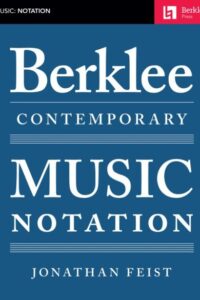
Who was Sorabji?
Kaikhosru Shapurji Sorabji: The Hermit of Modernist Maximalism
In the often-crowded pantheon of 20th-century composers, Kaikhosru Shapurji Sorabji (1892-1988) occupies a unique and enigmatic niche. A composer of staggering ambition, labyrinthine complexity, and self-imposed isolation, Sorabji crafted some of the most monumental, technically demanding, and stylistically idiosyncratic music ever conceived. His work, largely ignored during his lifetime and still challenging audiences today, represents a singular path through modernism – one defined by maximalism, intricate ornamentation, transcendental virtuosity, and a fierce, almost hermetic, independence.

Biography: A Self-Forged Identity
- Birth & Heritage: Born Leon Dudley Sorabji on August 14, 1892, in Chingford, Essex, England. His father was a Parsi engineer from India (thus the Persian-derived name Sorabji), and his mother was English-Spanish. This mixed heritage profoundly shaped his sense of identity, though he felt alienated from both cultures.
- The Name: Around 1914, he legally changed his name to Kaikhosru Shapurji Sorabji. “Kaikhosru” and “Shapurji” were Persian names chosen for their resonance and connection to ancient Persian history and Zoroastrianism, reflecting his deliberate construction of a unique persona.
- Musical Formation: Largely self-taught. He received some piano lessons in his youth but had no formal composition training. His musical education came through voracious listening, score study (especially Bach, Liszt, Busoni, Debussy, Ravel, Scriabin, Szymanowski, Medtner), and wide reading in literature, philosophy, and the occult.
- Early Career & Criticism: Worked as a music critic (under the pseudonym “S. Godfrey”) for outlets like The New Age and The New English Weekly from the 1910s to the 1930s. His critiques were famously acerbic, insightful, and often scathing, particularly targeting English musical provincialism and composers he deemed mediocre (which was most of them).
- The Recluse: Deeply disillusioned by the musical establishment and critical reception to his early performances (which were rare and often controversial), Sorabji gradually withdrew from public musical life starting in the late 1930s. After his mother’s death in 1940, he retreated almost completely to his secluded home “The Eye” in Corfe Castle, Dorset, where he lived with his companion, Reginald Norman Best, until his death. He forbade performances of his music for decades.
- The Ban Lifted: In 1976, pressured by a growing underground interest spearheaded by pianists like Yonty Solomon and Alistair Hinton (who later became his literary executor), Sorabji reluctantly lifted the ban on performances, provided he approved the performer.
- Death: Sorabji died on October 15, 1988, in Winfrith Newburgh, Dorset, leaving behind a colossal legacy of unpublished manuscripts.
Works: Monuments of Sound

Sorabji’s output is vast and overwhelmingly dominated by solo piano music, though he also composed orchestral works, chamber music, organ symphonies, and songs. His works are renowned for their extreme length, density, and technical difficulty, pushing the boundaries of playability.
- Key Masterpieces:
- Opus Clavicembalisticum (1930): His most famous (or infamous) work. A colossal 4+ hour piano epic in 12 movements (including fugues, passacaglias, toccatas, cadenzas), often considered one of the most challenging solo piano works ever written. A summit of contrapuntal complexity and virtuosic display.
- Symphonic Variations for Piano (1935-37): Another monumental work, exploring vast variation forms over an extended duration.
- Sequentia Cyclica super “Dies iræ” ex Missa pro Defunctis (1948-49): A massive cycle of 27 variations on the “Dies Irae” chant, demonstrating his intricate contrapuntal and transformative skills.
- 100 Transcendental Studies (1940-44): True to their name, these studies explore extreme technical and expressive demands far beyond those of Liszt or Chopin.
- Symphonies for Solo Piano: Several exist, including his Symphony No. 2 (“Jāmī”), blending orchestral textures and scope onto the piano.
- Gulistān – Nocturne for Piano (1940): A prime example of his lush, perfumed, and incredibly intricate “Persian”-inspired style.
- Concerti: He wrote several for solo piano and orchestra (e.g., Concerto per suonare da me solo e senza orchestra, per divertirsi), which are symphonic in scale and require superhuman virtuosity.
- Symphonies for Organ: Vast, complex works exploring the sonic possibilities of the instrument.
Analysis of Style: A Universe of Complexity
Sorabji’s style is instantly recognizable yet difficult to categorize. It synthesizes diverse elements into a unique and overwhelming whole:
- Maximalism: This is the defining characteristic. Sorabji embraced extremes:
- Length: Works lasting several hours are common.
- Density: Highly polyphonic textures, often with multiple independent melodic lines woven together in complex counterpoint (influenced by Bach, Busoni).
- Virtuosity: Demands transcendental technique – cascades of notes, complex polyrhythms, wide leaps, immense power, and extreme delicacy. He wrote as if the pianist had four hands.
- Ornamentation: Baroque-like ornamentation (trills, mordents, turns, grace notes) is ubiquitous, often layered and integral to the texture, creating shimmering, kaleidoscopic surfaces (influenced by Scriabin, Szymanowski, Middle Eastern/Persian music).
- Dynamic Range: From barely audible whispers to thunderous, percussive climaxes.
- Harmony: A complex fusion:
- Rooted in late-Romantic chromaticism (Scriabin, Szymanowski, early Schoenberg).
- Freely employed dissonance, clusters, and intricate chord structures.
- Often retained a sense of tonal centers or polarity, even amidst dense chromaticism (unlike strict atonality).
- Incorporated modal inflections, sometimes evoking Persian or Spanish flavors.
- Rhythm: Highly complex and fluid:
- Frequent use of polyrhythms (multiple simultaneous rhythms), cross-rhythms, and nested tuplets (triplets within quintuplets, etc.).
- Tempo often fluctuates wildly, requiring immense control.
- A sense of improvisatory freedom within highly structured forms.
- Form: Often large-scale, complex, and idiosyncratic:
- Favored variations (passacaglias, chaconnes), fugues, toccatas, and intricate multi-movement structures (like the Opus Clavicembalisticum).
- Forms were often expansive and cumulative, building through layered repetition and intensification rather than traditional development.
- Architecture was paramount, even in the densest textures.
- Influences (Assimilated, Not Imitated):
- Ferruccio Busoni: The most profound influence. Busoni’s ideas of “Young Classicism,” the transcendental potential of the piano, the fusion of Bachian counterpoint with modern harmony, and the concept of “Junge Klassizität” resonated deeply. Sorabji dedicated his Opus Clavicembalisticum to Busoni’s memory.
- Franz Liszt: Virtuosity, thematic transformation, large-scale forms, and the symphonic poem concept translated to piano.
- J.S. Bach: Contrapuntal mastery, structural rigor, and the use of forms like fugue and passacaglia.
- Alexander Scriabin: Mysticism, harmonic language, dense textures, and ecstatic climaxes.
- Karol Szymanowski: Sensuous harmony, intricate ornamentation (especially in the “Persian” inspired works like Métopes and Masques), and voluptuous textures.
- Debussy & Ravel: Color, texture, exoticism, and pianistic refinement.
- Mediterranean & Persian Cultures: While not authentically recreating these styles, he evoked their essence through ornamentation, melodic turns, and titles (Gulistān, Jāmī), reflecting his fascination with his Persian heritage and the wider Orient.
- Aesthetic: Sorabji’s music aimed for:
- Transcendence: Pushing beyond perceived limits of instrument, performer, and listener.
- Luxuriance & Opulence: A rich, sensual, almost decadent sound world.
- Intellectual Rigor: Underlying the sensual surface was meticulous structural planning.
- Individualism: A complete rejection of prevailing trends (serialism, neoclassicism, minimalism) in favor of his own uncompromising vision.
Legacy: From Obscurity to Cult Status
Sorabji’s legacy is complex and evolving:
- Decades of Neglect: His self-imposed exile and performance ban meant his music was virtually unknown outside a tiny circle for nearly 40 years. Manuscripts were inaccessible, unplayable, and unpublished.
- The Pioneers (1970s-): The lifting of the ban sparked interest. Pianists like Yonty Solomon, Michael Habermann, Geoffrey Douglas Madge (who made the first complete recording of Opus Clavicembalisticum in 1977), and later Marc-André Hamelin, Jonathan Powell, Fredrik Ullén, and Ronald Stevenson began the monumental task of learning, performing, and recording his works. This required immense dedication and technical prowess.
- Publication & Scholarship: The Sorabji Archive, established by Alistair Hinton (Sorabji’s literary executor), has been crucial in cataloging, editing, and facilitating the publication of scores (primarily by Dover Publications and The Sorabji Music Archive). Scholarly work is gradually increasing.
- Recordings Renaissance: The CD era and digital distribution (YouTube, streaming) have been transformative. Dedicated labels (Altarus, BIS, Toccata Classics, Piano Classics) have released numerous recordings, making this once-inaccessible music available globally. Complete cycles of the 100 Studies and other major works are underway.
- The Cult & The Challenge: Sorabji remains a “composer’s composer” and a cult figure. His music is not mainstream concert fare due to its extreme demands and duration. However, it commands deep respect and fascination among pianists, composers, and listeners drawn to its unique sound world and uncompromising vision. He is seen as the ultimate iconoclast, forging a path utterly independent of 20th-century musical fashions.
- Influence: His direct influence on other composers is hard to pinpoint due to his obscurity, but he stands as a powerful symbol of uncompromising artistic integrity and the exploration of extreme complexity and virtuosity. Composers interested in maximalism, intricate counterpoint, or pushing pianistic limits inevitably encounter his shadow.
- Copyright Controversy: The complex copyright status of his works (involving the Sorabji Archive and publishers) has sometimes been a point of friction within the community of performers and scholars seeking access.
Sorabji: The Solitary Giant
Kaikhosru Shapurji Sorabji was a true original. He inhabited a musical universe entirely of his own making, synthesizing diverse influences into a style characterized by unparalleled complexity, sensuous opulence, and transcendental ambition. His deliberate withdrawal from the world ensured decades of obscurity, but the dedication of pioneering performers and the power of recording technology have brought his extraordinary soundscapes to light. While his music remains challenging and demanding, it offers unparalleled rewards: a journey into a world of labyrinthine beauty, overwhelming power, and intellectual fascination. Sorabji stands as a testament to the power of an utterly individual artistic vision, uncompromising in its scope and ambition, a solitary giant whose monumental creations continue to challenge and inspire. He redefined the possible for the piano and left a legacy that continues to unfold as more performers dare to scale his musical Himalayas.
“In the Hothouse” is one of Sorabji’s most evocative and frequently performed works, serving as a perfect entry point into his dense, sensuous sound world. Here’s a detailed look at this fascinating piece:
Context: Two Piano Pieces (1918)
- Composed: 1918 (early in Sorabji’s career, age 26).
- Publication: First published in 1920, making it one of the earliest Sorabji works available in print.
- The Pair: “In the Hothouse” is paired with “Toccata” – a contrasting, hyper-virtuosic, and structurally complex piece showing his Busoni/Liszt influences. “In the Hothouse” offers the sensual, atmospheric counterpoint.
- Significance: Represents Sorabji’s early mastery of texture, harmony, and evocative atmosphere. It predates his gargantuan works but already displays his unique voice.
“In the Hothouse”: A Sensory Immersion
- Title & Imagery: The title instantly conjures an environment: humid, lush, teeming with exotic, overripe plant life, heavy perfumes, and stifling, enclosed heat. Sorabji translates this sensory overload into sound.
- Form & Structure: Relatively free and rhapsodic. It unfolds as a continuous, organic stream of consciousness rather than adhering to strict classical forms. Think of it as an elaborate, decadent arabesque.
- Style & Character:
- Extreme Sensuality: This is the defining feature. The music drips with lush, complex harmonies and suffocatingly rich textures.
- Harmony: Deeply chromatic, rooted in late Scriabin and early Szymanowski. Expect dense, constantly shifting chords: augmented harmonies, whole-tone inflections, unresolved dissonances creating tension, and sudden moments of surprising consonance like shafts of light piercing foliage. It avoids traditional tonality but gravitates around implied centers.
- Texture: Thick, layered, and constantly in motion. Tremolos, trills, rapid filigree (ornamental passages), and cascading arpeggios create a shimmering, humid haze. Melodies are often embedded within this dense undergrowth rather than standing clearly apart. The writing often requires the pianist to sustain multiple layers simultaneously.
- Rhythm: Fluid and flexible, often obscured by the sheer density of notes and ornamentation. Rubato (expressive tempo fluctuations) is essential. While less overtly complex polyrhythmically than his later works, the rhythmic flow feels organic and improvisatory.
- Dynamics & Articulation: Wide dynamic range, often shifting suddenly between extremes (e.g., thunderous climaxes collapsing into fragile whispers). Articulation varies from sharp staccatos to legatissimo passages that blur together. Pedaling is crucial for sustaining the harmonic haze and creating resonance.
- Ornamentation: Quintessential early Sorabji. Trills, mordents, turns, and grace notes are not mere decoration; they are the texture, creating constant flickering movement and contributing to the claustrophobic, teeming atmosphere. This foreshadows the intricate ornamentation dominating his mature style.
- Emotional Landscape: Evokes opulence, decadence, languor, mystery, stifling heat, hidden dangers, and overwhelming sensory stimulation. There’s a sense of beauty bordering on the grotesque due to its sheer intensity.
Influences Audible in “In the Hothouse”
- Scriabin (Primary): The harmonic language (mystic chords, unresolved dissonance, ecstatic climaxes), the sensual atmosphere, and the use of trills/tremolos are deeply indebted to Scriabin’s late sonatas and poems (e.g., Vers la flamme). Sorabji pushes Scriabin’s decadence further.
- Szymanowski: The opulent textures, perfumed harmonies, and “orientalist” exoticism (though abstracted here) strongly recall Szymanowski’s “Métopes” or “Masques,” which Sorabji admired deeply.
- Debussy: The focus on atmosphere, texture, and harmonic color (whole-tone scales, parallel chords) shows Debussy’s influence, though rendered with far greater density and intensity.
- Ravel: The virtuosic filigree and lush harmonies (think “Gaspard de la Nuit,” especially “Ondine” or “Le gibet”) are a touchstone, again amplified.
- Liszt: The rhapsodic freedom and dramatic gestures hint at Liszt, though filtered through a post-Scriabinesque lens.
Performance Challenges
- Texture & Balance: Maintaining clarity amidst the dense, rapidly shifting textures is paramount. The pianist must carefully voice chords and layers to prevent muddiness while sustaining the essential harmonic haze.
- Ornamentation as Texture: Executing the constant ornamentation smoothly and evenly, integrating it into the melodic and harmonic flow rather than treating it as mere decoration.
- Dynamic Control: Navigating the extreme dynamic contrasts and sudden shifts without sounding jarring. Creating a true pianissimo shimmer within complexity is incredibly difficult.
- Rubato & Phrasing: Applying expressive tempo fluctuations naturally while maintaining the overall structural coherence and forward momentum of the rhapsodic form.
- Pedaling: Using the pedal to create resonance and blend without causing harmonic blurring or loss of rhythmic definition. Requires exceptional sensitivity.
- Stamina & Focus: While shorter than his later works (typically 12-15 minutes), the piece demands intense concentration and physical control to sustain the atmosphere and navigate the technical intricacies.
Legacy & Significance of “In the Hothouse”
- Accessibility: It remains one of Sorabji’s most “accessible” works due to its evocative title, relatively shorter duration, and concentrated expression. It’s a frequent choice for pianists introducing audiences to Sorabji.
- Blueprint: It serves as a crucial blueprint for Sorabji’s mature style, showcasing his core preoccupations: sensuality, harmonic density, intricate ornamentation as texture, and atmospheric evocation, all present in embryonic form.
- Performance History: Despite Sorabji’s later ban, “In the Hothouse” (along with the Toccata) was one of the few pieces occasionally performed during his lifetime (e.g., by Sorabji himself and pianist Reginald Paul) and became a key work for the pioneering generation post-1976 (Yonty Solomon, Michael Habermann, Marc-André Hamelin, Jonathan Powell, Fredrik Ullén).
- Gateway Piece: It functions as a vital “gateway drug” into Sorabji’s world. Its success in conveying its intense atmosphere often encourages listeners to explore his more monumental, complex works.
- Standalone Masterpiece: Regardless of its role as an introduction, it stands as a perfectly formed and powerful piece of early modernist piano writing, a miniature tone poem of extraordinary evocative power.
“In the Hothouse” is a sun-drenched, overripe, and intoxicating immersion into Sorabji’s unique aesthetic. It captures the essence of his sensual maximalism in a concentrated dose, showcasing his debt to Scriabin and Szymanowski while asserting his own distinct voice. Its evocative power, technical brilliance, and relative brevity ensure its enduring place as one of his most beloved and frequently performed works, offering a compelling glimpse into the hothouse of Sorabji’s extraordinary musical imagination.
| Artist or Composer / Score name | Cover | List of Contents |
|---|---|---|
| John Cage – Song Books Volume 2 |
 |
|
| John Cage Living Room Music |
 |
|
| John Cage Nocturne for Violin and Piano |
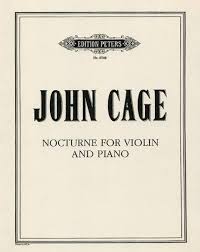 |
|
| John Cage Sonatas And Interludes For Prepared Piano |
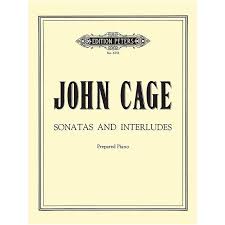 |
|
| John Cage Suite For Toy Piano |
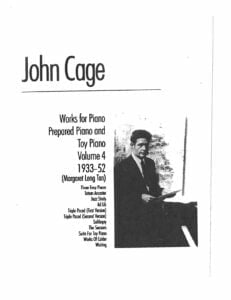 |
|
| John Carpenter – Halloween theme – Guitar Tabs arr. (Easy) |
 |
|
| John Carpenter – Halloween theme (Miheal Myer) – Piano solo |
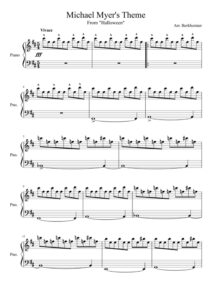 |
|
| John Coltrane – Artist Transcriptions (transcribed by Carl Coan) |
 |
John-Coltrane-transcriptions contents — John Coltrane Solos |
| John Coltrane – Essential Jazz Lines Guitar with TAB |
 |
John Coltrane – Essential Jazz Lines |
| John Coltrane – Giant Steps – Tete Montoliu |
 |
|
| John Coltrane – Giant Steps Jazz Play Along (Musescore File).mscz | ||
| John Coltrane – Patterns |
 |
John Coltrane – Patterns |
| John Coltrane – Patterns.mscz | ||
| John Coltrane – solo-transcription- But Not for Me |
 |
|
| John Coltrane – The Music Of John Coltrane (Jazz Giants) |
 |
John Coltrane – The Music Of John Coltrane (Jazz Giants) |
| John Coltrane (10 John Coltrane Classics) |
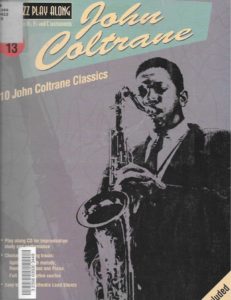 |
|
| John Coltrane Equinox (Jazz Play Along Vol. 13) (Musescore File).mscz | ||
| John Coltrane Improvised Saxophone Solos (John Coltrane) |
 |
John Coltrane Improvised Saxophone Solos (John Coltrane) |
| John Coltrane Jazz Improvisation Vol 1 Tenor Solos For All Instrumental Musicians | John Coltrane Jazz Improvisation Vol 1 Tenor Solos For All Instrumental Musicians cover | John Coltrane Jazz Improvisation Vol 1 Tenor Solos For All Instrumental Musicians |
| John Coltrane Jazz Piano Solos Series Volume 24 Piano Vocal guitar chords |
 |
John Coltrane Jazz Piano Solos Series Volume 24 Piano Vocal guitar chords Contents |
| John Coltrane Michael Brecker Legacy by Olegario Díaz Saxophone |
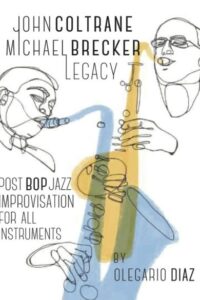 |
John Coltrane Michael Brecker Legacy by Olegario Díaz Saxophone |
| John Coltrane Omnibook For Bb instruments Transcribed exactly from his recorded solos |
 |
John Coltrane Omnibook For Bb instruments Transcribed exactly from his recorded solos |
| John Coltrane Omnibook For C Instruments |
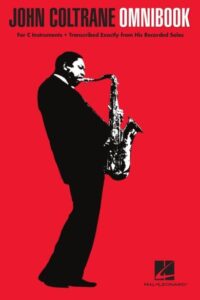 |
John Coltrane Omnibook For C Instruments |
| John Coltrane Omnibook For Eb E Flat instruments Transcribed exactly from his recorded solos |
 |
John Coltrane Omnibook For E Flat instruments Transcribed exactly from his recorded solos |
| John Coltrane Plays Coltrane Changes for C Instruments Artist Transcriptions Saxophone |
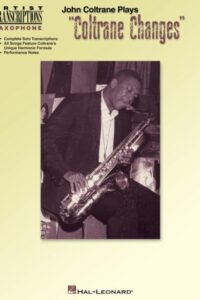 |
John Coltrane Plays Coltrane Changes for C Instruments Artist Transcriptions Saxophone |
| John Coltrane, The John Coltrane Reference (Book) |
 |
|
| John Denver – Annies Song | ||
| John Denver – Leaving On A Jetplane | ||
| John Denver Anthology (Piano, Guitar & Voice Songbook) |
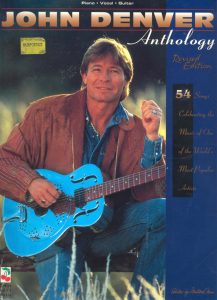 |
John Denver Anthology sheet music |
| John Denver Anthology For Easy Guitar |
 |
John Denver Anthology For Easy Guitar |
| John Denver Best Of Easy Piano |
 |
John Denver Best Of Easy Piano |
| John Denver The Flower That Shattered The Stone |
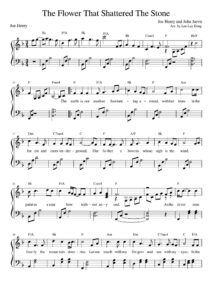 |
|
| John Dowland By Diana Poulton (Book Biography and musical analysis) |
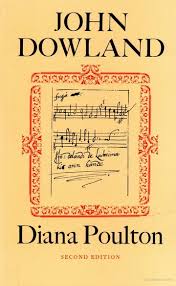 |
|
| John Duarte Appalachian Dream Suite For Solo Guitar |
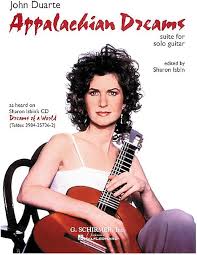 |
|
| John Duarte Classic Jerome Kern for Classical Guitar |
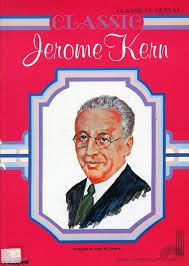 |
John Duarte Classic Jerome Kern for Classical Guitar |
| John Duarte English Suite for Guitar solo Opus 31 | John Duarte English Suite for Guitar solo Opus 31 | |
| John Duarte Melody And Harmony For Guitarists (Mel Bay) Classical guitar |
 |
|
| John Duarte Simply Blues for Guitar 7 original pieces | John Duarte Simply Blues for Guitar 7 original pieces | |
| John Fahey Guitar Anthology Guitar Tablature |
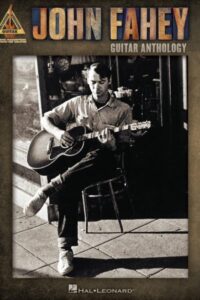 |
John Fahey Guitar Anthology Guitar Tablature |
| John Fogerty Proud Mary (Rollin’ On The River) Guitar ensemble and Voice |
 |
|
| John Fogerty Proud Mary (Rollin’ On The River) Piano Vocal |
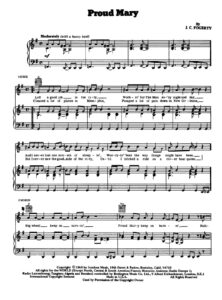 |
|
| John Hill – Classic Rock For Classical Guitar with Tablature |
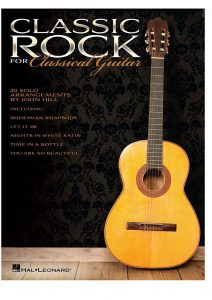 |
John Hill – Classic Rock For Classical Guitar |
| John Hill Journey Through The Classics Book 1 Guitar Repertoire |
 |
Journey Through The Classics Book 1 Guitar |
| John Ireland 2 pieces for piano (February’s Child and Aubade) |
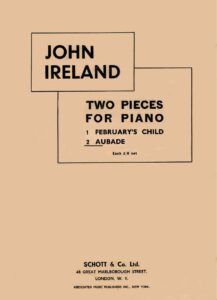 |
|
| John Jacob Niles, The Songs of (for high voice and Piano sheet music) |
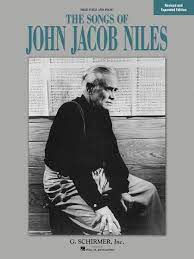 |
John Jacob Niles, The Songs of (for high voice and Piano sheet music) |
| John Kember Jazz Piano Studies Vol 1pdf |
 |
|
| John Laporta – Developing Sight Reading Skills In The Jazz Idiom |
 |
|
| John Lee Hooker Anthology Recorded Versions Guitar With Tablature |
 |
John Lee Hooker Anthology Recorded Versions Guitar With Tablature |
| John Lee Hooker For Guitar Tab (John Lee Hooker) 11 Great Songs Easy To Read Guitar Tablature |
 |
John Lee Hooker For Guitar Tab (John Lee Hooker) 11 Great Songs Easy To Read Guitar Tablature |
| John Lee Hooker Guitar Signature Licks Book + Audio Mp3 Tracks To Play Along By Dave Rubin |
 |
John Lee Hooker Guitar Signature Licks Book + Audio Mp3 Tracks To Play Along By Dave Rubin |
| John Lee Hooker Play Guitar With John Lee Hooker On Six Of His Greatest Hits With Tablature |
 |
John Lee Hooker Play Guitar With John Lee Hooker On Six Of His Greatest Hits With Tablature |
| John Legend – All Of Me (Easy Piano Solo) | John Legend – All Of Me (Easy Piano Solo) | |
| John Legend – All Of Me (Easy Piano Solo) (Musescore File).mscz | ||
| John Legend – All of Me Sheet Music – sheet music |
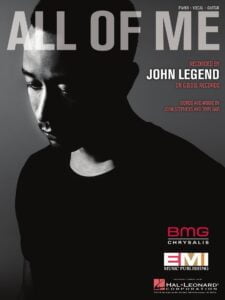 |
|
| John Legend – It Dont Have To Change | ||
| John Legend – Once Again (Songbook) (John Legend) |
 |
John Legend – Once Again (Songbook) (John Legend) |
| John Legend – Ordinary People | ||
| John Legend Best Of John Legend Songbook |
 |
John Legend Best Of John Legend Songbook |
| John Legend Collection, The For Piano Solo Intermediate To Advanced Level |
 |
John Legend Collection, The For Piano Solo Intermediate To Advanced Level |
| John Legend Get Lifted |
 |
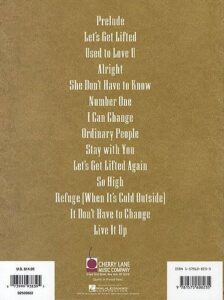 |
| John Legend Once Again (songbook) |
 |
John Legend Once Again |
| John Legend Ordinary People piano sheet music |
 |
|
| John Lennon Memories Of – Edited and introduced by Yoko Ono (Biography) |
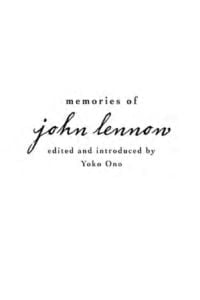 |
|
| John Lennon – Guitar Collection Guitar Recorded Versions with Tablature (John Lennon) |
 |
Lennon, John – Guitar Collection Guitar Recorded Versions |
| John Lennon IMAGINE |
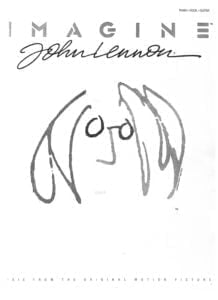 |
Lennon Imagine |
| John Lennon Imagine (Musescore File).mscz | ||
| John Lennon – Greatest Hits (Guitar Tab) |
 |
John Lennon – Greatest Hits |
| John Lennon – Happy Christmas (War Is Over) Piano & Vocal | John-Lennon-Happy-Christmas-War-Is-Over 1st page | |
| John Lennon – Imagine (Piano Part As Played By Lennon in 1971) |
 |
|
| John Lennon – Imagine (John Lennon) SATB Arrranger Roger Emerson | Lennon, John – Imagine SATB Arrranger Roger Emerson | |
| John Lennon – Imagine (Piano Solo) | John Lennon – Imagine (Piano Solo) | |
| John Lennon – Jealous Guy (Piano and vocal) | John Lennon – Jealous Guy | |
| John Lennon – Oh My Love Piano solo arr. sheet music | John Lennon – Oh My Love Piano solo arr. sheet music | |
| John Lennon – Oh My Love Piano solo arr. sheet music.mscz | ||
| John Lennon – Power To The People The Hits (Songbook) (John Lennon) Piano Vocal Guitar |
 |
John Lennon – Power To The People The Hits (Songbook) (John Lennon) Piano Vocal Guitar |
| John Lennon & Ono Yoko Happy Xmas (War Is Over) |
 |
|
| John Lennon Collection Book |
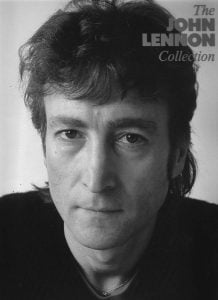 |
John Lennon Collection |
| John Lennon Imagine (Songbook) Easy Piano |
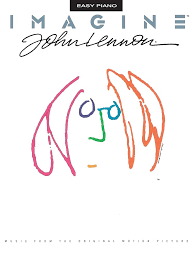 |
John Lennon Imagine (Songbook) Easy Piano |
| John Lennon Legend The Very Best Of John Lennon Easy Piano |
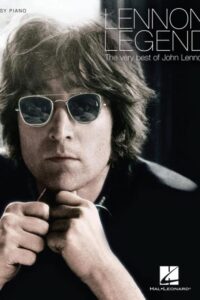 |
John Lennon Legend The Very Best Of John Lennon Easy Piano |
| John Lennon Paul McCartney Guitar Play Along Vol. 123 Lennon and McCartney Acoustic Pdf + Audio Mp3 Embedded Tracks With TABs |
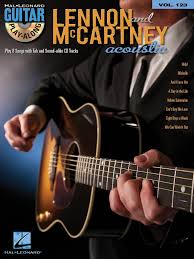 |
John Lennon Paul McCartney Guitar Play Along Vol. 123 Lennon and McCartney Acoustic Pdf + Audio Mp3 Embedded Tracks With TABs |
| John Lennon Piano Solos 2nd Edition |
 |
John Lennon Piano Solos 2nd Edition |
| John Lennon The Beatles Years Guitar Solo arr. Noriyasu Takeuchi 22 Songs | John Lennon The Beatles Years Guitar Solo arr. Noriyasu Takeuchi 22 Songs | |
| John Lennon The Lennon Companion – Book (2004) by E. Thomson & D. Gutman – John Lennon’s Biography |
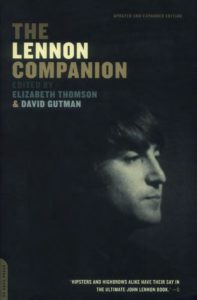 |
|
| John Lennon The Life – Book by Philip Norman (Biography) |
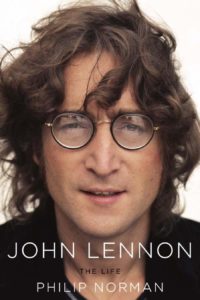 |
|
| John Mayall With Eric Clapton Blues Breakers (Guitar TAB) |
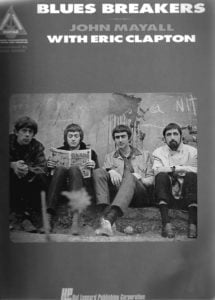 |
John Mayall With Eric Clapton Blues Breakers (Guitar) |
| John Mayer Continuum Guitar TAB |
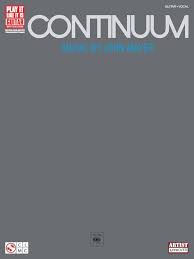 |
John Mayer Continuum Guitar TAB |
| John Mayer – Carry Me Away from Sob Rock | John Mayer – Carry Me Away from Sob Rock | |
| John Mayer – Gravity | John Mayer – Gravity | |
| John Mayer – Last Train Home from Sob Rock | John Mayer – Last Train Home from Sob Rock | |
| John Mayer – New Light from Sob Rock | John Mayer – New Light from Sob Rock | |
| John Mayer – Room for Squares Guitar TAB |
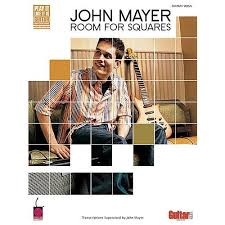 |
John Mayer Room for Squares Guitar TAB |
| John Mayer – Why You No Love Me from Sob Rock | John Mayer – Why You No Love Me from Sob Rock | |
| John Mayer – Wild Blue from Sob Rock | John Mayer – Wild Blue from Sob Rock | |
| John Mayer Anthology for Easy Guitar – Volume 1 (Songbook) – John Mayer & Jim Beloff sheet music |
 |
John Mayer Anthology for Easy Guitar – Volume 1 (Songbook) – John Mayer & Jim Beloff sheet music |
| John Mayer Battle Studies Guitar TAB |
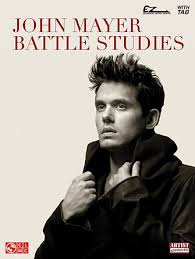 |
John Mayer Battle Studies |
| John Mayer Continuum Songbook Piano Vocal Chords |
 |
John Mayer Song Book Continuum |
| John Mayer Guitar Play Along Vol. 189 with audio MP3 tracks |
 |
John Mayer Guitar Play Along Vol. 189 with audio MP3 tracks |
| John Mayer Heavier Things songbook |
 |
 |
| John Mayer Live – The Great Guitar Performances Guitar TAB |
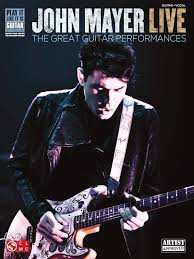 |
John Mayer Live – The Great Guitar Performances |
| John Mayer Room For Squares (Easy Guitar Tabs Vocal) Play it like it is |
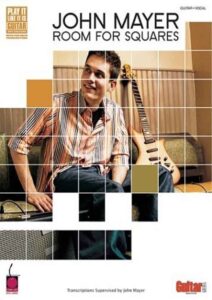 |
John Mayer Room For Squares (Easy Guitar Tabs Vocal) Play it like it is |
| John Mayer The Heart Of Life | John Mayer The Heart Of Life | |
| John Mayer Your Body is a Wonderland | John Mayer Your Body is a Wonderland | |
| John McLaughlin & Mahavishnu Orchestra (Songbook) |
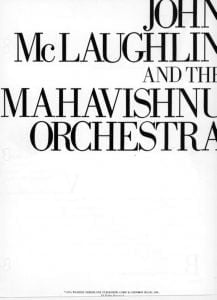 |
John Mclaughlin & Mahavishnu Orchestra |
| John McLaughlin Guitar Tab Anthology |
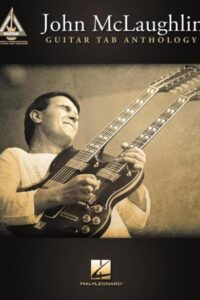 |
John Mclaughlin Guitar Tab Anthology |
| John Mclaughlin Music Book (Guitar) |
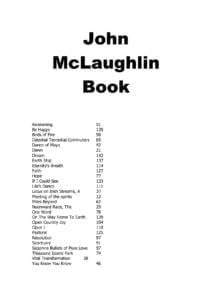 |
John Mclaughlin Music Book (Guitar) |
| John Mehegan Famous Jazz Style Piano Folio – With Instruction on How to play Jazz Piano |
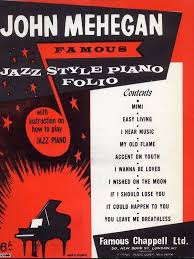 |
John Mehegan- Famous Jazz Style Piano |
| John Mehegan Improvising Jazz piano |
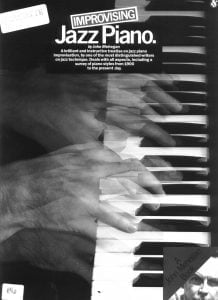 |
|
| John Mehegan Jazz Improvisation 1 Tonal and Rhythmic Principles (Book) |
 |
|
| John Mehegan Jazz Improvisation 2 Jazz Rythm And The Improvised Line |
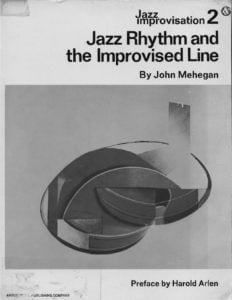 |
|
| John Mehegan Jazz Improvisation 3 Swing And Early Progressive Piano Styles |
 |
Swing And Early Progressive Piano Styles Jazz Improvisation 3 by John Mehegam |
| John Mehegan Jazz Improvisation 4 – Contemporary piano styles by John Mehegan |
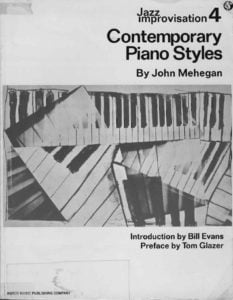 |
|
| John Mehegan The Jazz Pianist Book 2 |
 |
John Mehegan The Jazz Pianist Book 2 |
| John Mellencamp Anthology Piano Vocal Guitar |
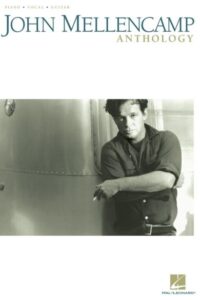 |
John Mclaughlin Guitar Tab Anthology |
| John Mellencamp Guitar Collection Guitar Tablature |
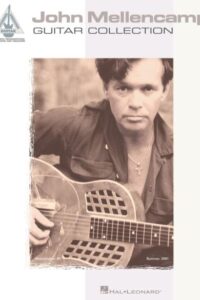 |
John Mellencamp Guitar Collection Guitar Tablature |
| John Murphy – In The House In A Heartbeat (from 28 days later) Piano solo sheet music |
 |
|
| John O’Neill The Jazz Method For Saxophone (Alto) |
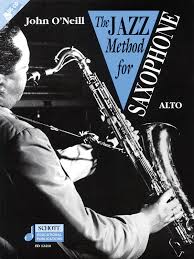 |
|
| John Petrucci Wild Stringdom (Guitar with Tablature) |
 |
|
| John Petrucci – Suspended Animation Authentic Guitar TAB (John Petrucci) |
 |
|
| John Petrucci Rock Discipline (Guitar with Tablature) |
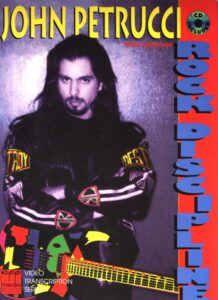 |
|
| John Pisano Jazz Guitar Comping Masterclass Guitar Tablature |
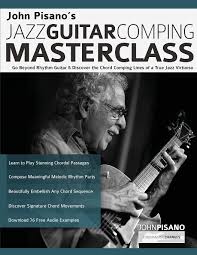 |
|
| John Powell Bourne Identity Bourne Supremacy Main Titles | John Powell Bourne Identity Bourne Supremacy Main Titles | |
| John Powell How To Train Your Dragon The Hidden World Music From The Motion Picture Soundtrack Piano Solo |
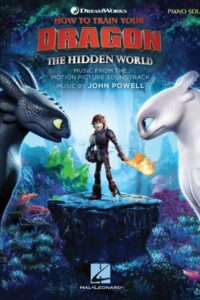 |
John Powell How To Train Your Dragon The Hidden World Music From The Motion Picture Soundtrack Piano Solo |
| John Powell Romantic Flight Easy Piano (How To Train Your Dragon) Piano Solo |
 |
|
| John Powell Test Drive (How To Train Your Dragon) Piano Solo |
 |
|
| John Powell The Call Of The Wild Music From The Motion Picture Soundtrack Piano Solo |
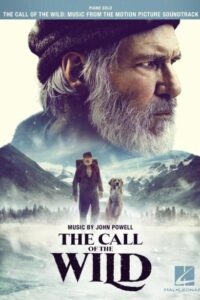 |
John Powell The Call Of The Wild Music From The Motion Picture Soundtrack Piano Solo |
| John Prine – Guitar Songbook 15 Songs Transcribed in Standard Guitar Notation Vocal and TAB |
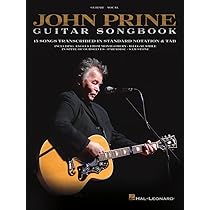 |
John Prine – Guitar Songbook 15 Songs Transcribed in Standard Guitar Notation Vocal and TAB |
| John Rutter – Candlelight Carol (full score) |
 |
|
| John Rutter – Magnificat with English singing version (Choir & piano) | John Rutter – Magnificat | |
| John Rutter – The Gift Of Music satb |
 |
|
| John Rutter Look At The World Words and Piano Complete |
 |
|
| John Scofield Guitar Transcriptions |
 |
John Scofield Guitar Transcriptions |
| John Scofield Time On My Hands Guitar TABs |
 |
John Scofield Time On My Hands Guitar TABs |
| John Steward – Daydream Believer | ||
| John Taylor – Ambleside |
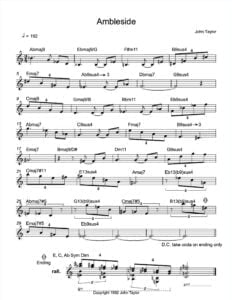 |
|
| John Thompson Adult Piano Course Book 1 |
 |
|
| John Thompson Adult Piano Course Book 2 |
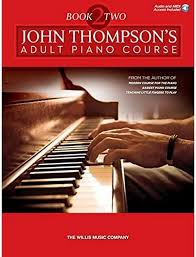 |
|
| John Thompson Easiest Piano Course Part 1 and 2 |
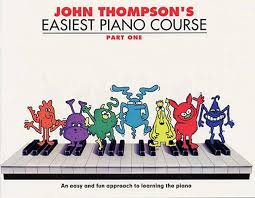 |
|
| John Thompson Easiest Piano Course Part 3 to 8 |
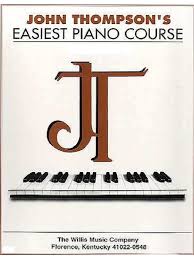 |
|
| John Thompson Modern Course For Piano 2nd Grade |
 |
|
| John Thompson Piano 1 Modern Course for the piano First Grade Book |
 |
|
| John Thompson Popular Piano Solos Book 1 |
 |
John Thompson Popular Piano Solos Book 1 |
| John Williams The Post. Music From The Motion Picture Soundtrack Piano Solo |
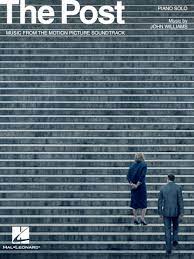 |
John Williams The Post. Music From The Motion Picture Soundtrack Piano Solo |
| John Williams – Harry Potter Theme (Piano solo sheet music) | John Williams – Harry Potter Theme (Piano solo sheet music) | |
| John Williams – Jaws Sheet Music |
 |
|
| John Williams – Raiders March (Raiders of the Lost Ark) |
 |
|
| John Williams – Anthology (Revised & Updated) |
 |
John Williams – Anthology (Revised & Updated) |
| John Williams – Cavatina (The Deer Hunter) | Cavatina – John Williams – The Deer Hunter | |
| John Williams – Jane Eyre |
 |
|
| John Williams – Jewish Town | ||
| John Williams – Jurassic Park (Piano Solos) |
 |
John Williams – Jurassic Park (Piano Solos) |
